Table of contents
- What is leadership?
- Why is leadership important in business?
- What is the difference between leadership and management?
- What are the leadership skills and characteristics of a good manager?
- The profile of an effective senior leader by Ian MacRae
- Establishing leadership potential using High Potential Trait Indicator
- Today’s graduates, tomorrow’s leaders
- Self-development and the steps towards stronger leadership
- Your leadership questions answered
- Conclusion
Talented leaders are your organisation's most valuable asset. They are integral for motivating employees, improving performance and your bottom line. But without a well-considered strategy and the right information to make informed decisions, identifying, recruiting, and retaining leaders can be an almost impossible challenge
What’s more, as the business landscape continues to change and become increasingly more competitive, you also need a dedicated strategy to help you identify tomorrow’s leaders – today. Get this right, and your business will thrive in the long-term. Get it wrong, and you risk workforce disharmony and rising costs. This comes down to understanding the characteristics of high potential employees, which are high-value players within your organisation and ensuring you nurture their potential.
Clarity around the difference between leadership and management is paramount when conducting your leadership strategy. While leadership attributes are focused on a vision, management is about goals. These might sound similar initially, but they offer unique benefits. Recognising the value in each and how to position people correctly within a business can help you thrive.
At Thomas International, we use psychometric assessments to help organisations like yours identify effective leadership skills, understand the effect of personality traits on a team, and gain a 360-degree view of your people development needs. We’ve been doing this since 1981 – and we’ve brought together some of our knowledge to share with you.
This guide will help you understand the characteristics of great leaders, how to predict leadership potential, what best-practice recruitment looks like, and how to develop leadership skills.
What is leadership?
Leadership is about vision. It is a skill that enables a person to guide or direct individuals, teams and entire organisations to achieve that vision. Leaders are focused on driving everyone toward a common goal through a strategy that encompasses understanding people’s strengths and supporting them. Effective leadership is concentrated on inspiring people through social influence to bring the vision to life.
Cohesion and a unified approach are how leaders execute their strategy which is designed to promote growth, increase productivity and support businesses to thrive. Many often think of managers as leaders, but this isn’t as clear cut as that. Leadership is defined differently by most people you ask, but most will agree that they bring people together to achieve a shared vision.
How that vision is achieved can incorporate a plethora of skills and characteristics which are common among effective leaders. Human skills, often referred to as emotional intelligence including empathy, individualisation and modesty, are attributes that are commonly associated with leaders. Developing leadership skills associated with emotional intelligence can be powerful to ensure people are seen.
The impact of leadership within a business can determine whether a business will thrive or dive, so the most important factor within a business around leadership is an internal agreement of what your particular business defines as effective leadership.
Leaders can hail from a variety of backgrounds and there is no singular path to achieving leadership within an organisation. Provided the individual can envision how improvements can be made, how to enact the strategy and unite people to work as a team to achieve the end goal, then they are well-positioned to carry the responsibility of leadership.
Why is leadership important in business?
Leadership is one of the most effective ways to improve and grow a business. It is a key management function to increase efficiency and achieve the long-term and short-term vision for your organisation. Here are some key reasons why leadership is so important in business:
- Leaders motivate employees to take action through economic and non-economic rewards to incite action towards achieving the vision.
- Leadership initiates people. Through communication, vision and goal setting they are able to encourage people to take action. This is usually where leadership begins.
- Leaders are there for guidance. They don’t just oversee that the work is done, they teach, nurture and guide people to encourage learning and personal growth.
- Leadership elicits coordination which ensures people are on path with the strategy that will achieve the goals and visions. This also ensures personal interests are aligned with organisation goals.
- Leaders set direction and this can result in increased confidence among employees. It can also increase satisfaction and reduce staff turnover as a result.
- Leadership drives improvement, growth and productivity within an organisation. Without effective leadership, divisions can often become fragmented or department goals do not align which causes tension that inhibits businesses reaching their full potential.
What is the difference between leadership and management?
Leadership and management are often used interchangeably, although there are some key differences in the roles. Both are important within a business model and both help to achieve goals, but they handle different aspects within the organisation.
The first misconception around leadership and management is that when you move into a managerial role you automatically become a leader. This is not the case, as managers tend to handle ‘things’ such as tasks - responsibilities around advertising, IT or equipment. While managers may ‘lead’ a team, they are oriented on smaller goals rather than the big picture. To differentiate a leader in a management level role would require the individual to manage and lead people to achieve.
The difference between goals and vision is also a major differentiator between leaders and managers. Leaders see the big picture and create the motion to transform that vision into reality by implementing a strategy that involves motivating people and teams, unifying departments towards a common goal. Managers, on the other hand, are focused on goals that are part of the larger plan.
As comes naturally with the territory of leadership, those in such positions tend to take risks that managers do not. In fact, managers are focussed on mitigating risk and avoiding potential pitfalls. This flows into short-term and long-term focus. Managers are focused on the short-term while leaders are looking much further into the future. They remain motivated towards a larger end goal without requiring recognition.
Another discerning difference between managers and leaders is that one is built around people and relationships, while the other structured around processes. Leaders motivate people to help them achieve their vision. They often use their skills of individualisation and empathy to connect with people. Managers instead implement structures and processes that support the achievement of the goals set by a leader.
When it comes to inciting change and shaking things up, leaders are fit for the role. They are willing to push boundaries and innovate to create change, such as through redundancies, for the better. Managers instead aim to maintain processes that are working. They may refine systems but will not call for a complete overhaul.
Another way to differentiate leadership from management is to evaluate their interactions with others. Leaders inspire people and have people who follow them. Those who follow in turn become advocates for the leader and what they are aiming to achieve. Managers instead direct people to achieve a particular goal. Those that work with the manager tend to follow directions and seek to please their managers.
There is however a major overlap between the roles when it comes to leadership. Leaders must take on responsibility for managing. In a leadership role, there is always a need for management, however much of the work may be delegated to other team members who can ensure the task is carried out effectively. In contrast, managers are not expected to do the same. Management is a function that falls in the realm of good leadership skills. Managers can, however, develop their leadership skills to evolve into future leaders.
What are the leadership skills and characteristics of a good manager?
The characteristics of a good manager
It’s well-known that people leave managers, not companies – but have you ever stopped to consider why? It's all too easy for managers to bury their heads in the sand when it comes to issues like employee engagement, rather than commit to tackling the issue head-on.
But employee engagement is multi-faceted, so if employees are unhappy with their relationships at work, they’re far more likely to leave for greener pastures – and it’s the responsibility of managers to prevent this from happening.
Let’s take a look at what it takes to be a good manager and – crucially – keep employees happy and engaged, with a real sense of ownership.

The seven characteristics of a good manager
From an employee’s perspective, a good manager can be summarised with seven key characteristics.
- Regular communication – by setting performance expectations clearly, not just for employees, but also for what’s required of management.
- Access to the right resources – so employees have what they need to carry out their duties to the best of their abilities.
- Trust people to make the right decisions – which frees them up to focus on what they do best.
- Recognise team members – for their contributions and efforts.
- Establish a caring culture – by making everybody feel they’re treated as an individual.
- Focus on value – to help people feel like they meaningfully contribute to the company.
- Encourage employee opportunities – to help them develop and grow.
These characteristics are invaluable for quality management within an organisation. With employee engagement, such a large contributor to levels of staff turnover, understanding the qualities that good managers embody is instrumental for teams. It involves a cycle that can be toxic to businesses if not identified. Alternatively, those organisations which do encompass and nurture the desirable skills of a manager will reap the benefits and see the positive impact it can have on staff morale and engagement. The good news is that there are methods of improving leadership skills too.
Thomas Engage: enhanced employee management
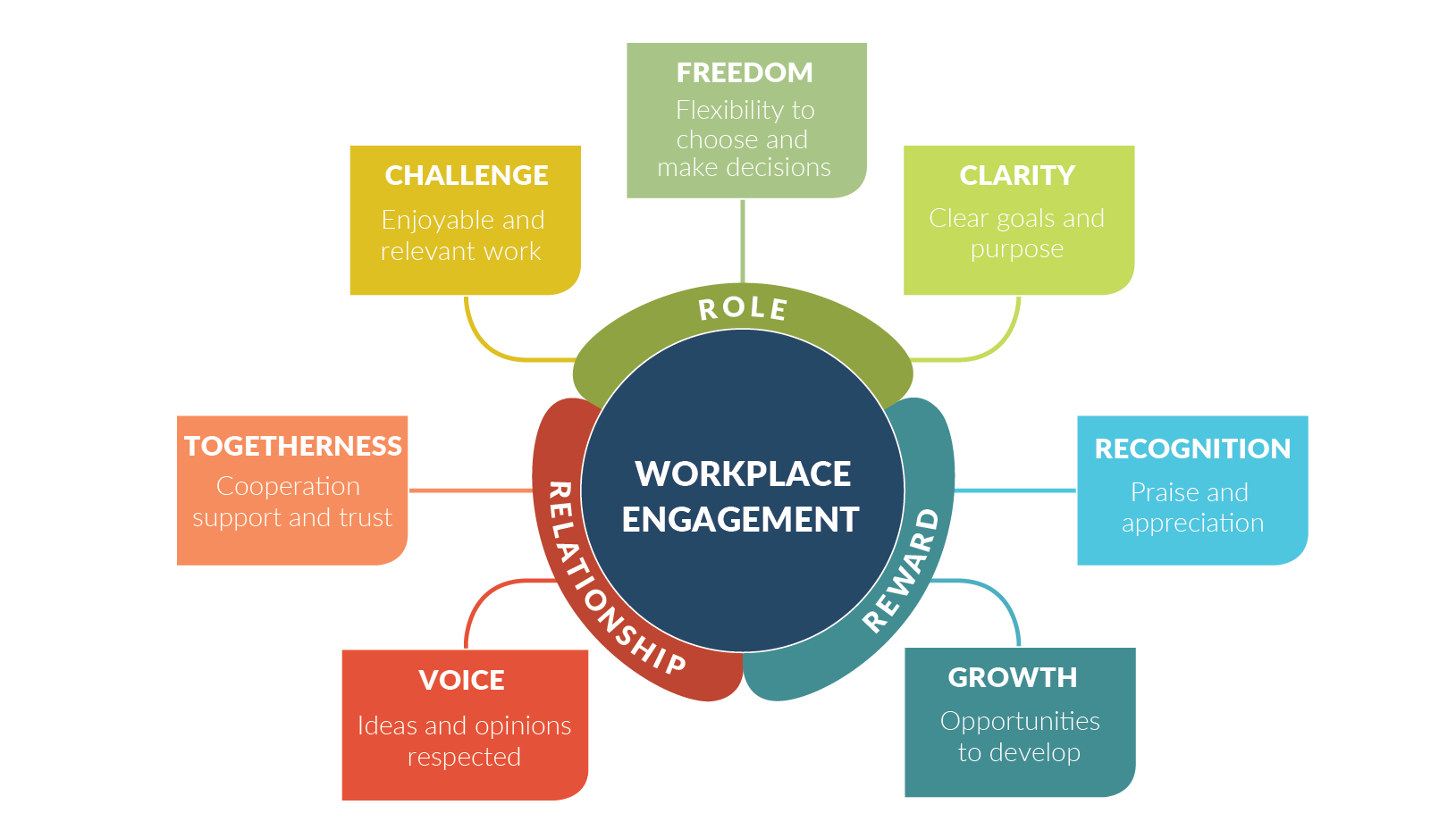
We see promoting positive engagement as a win-win situation. When people have a positive attitude towards their role and organisation, they’re not only more productive and engaged, but they’ll also be more likely to want to develop – which is all beneficial for both your people and your company.
To help us truly understand people as individuals and tailor the approach to employee engagement, we use the Thomas Engage model, where the strength and quality of relationships are measured using two important drivers:
- Togetherness – people feel valued as members of a group, and recognise that safety, trust, support, and cooperative relationships are high on the company’s agenda.
- Voice – people feel accepted, their opinions are valued and acted upon, and their colleagues listen to and respect what they have to say.
- Simply, the process enables you to establish engagement levels in your organisation and identifies appropriate actions to help create effective and sustainable change.
The must-haves for a great leader
Perhaps you’re wondering how to improve leadership skills. There’s much debate on whether leaders are born or made but, whichever is the truth, effective leaders all have three traits in common.
1. Emotional intelligence
The difference between an acceptable leader and an exceptional one often lies in their capacity for emotional intelligence. Emotional intelligence is the ability to identify and manage your own emotions – and the emotions of others around you. In recent years it has become noted for the high value it offers in the workplace and has been identified as one of the keys to being a great leader.
But what is it about emotional intelligence that’s so critical to effective leadership?
- Self-awareness – Strong leaders can recognise their own emotions and the impact of these on others. They can also regulate their emotions as appropriate to the situation and react with logic rather than emotion when faced with a challenge or adversity.
- Motivation – Effective leaders are self-motivated, committed to producing quality work, and strive to meet their own goals, and those of their team and company.
- Empathy – To successfully guide other people, a leader must be empathetic, and understand what motivates or upsets them. Empathy gives leaders the ability to tune into the needs of others which develops better relationships.
- Sociability – Leaders with great social skills are able to manage the emotions of others and navigate change or conflict. They’re good networkers and can build strong relationships.
What’s more, academic research demonstrates that high emotional intelligence is more prevalent in senior leaders with a long tenure – meaning that experience plays a significant role in understanding the feelings and needs of others.
Thomas's Emotional Intelligence assessment (TEIQue) can help your business understand employees emotions and how they approach the emotions of others in the workplace.
2. Teamwork
To successfully grow a business and hit strategic goals, a leader needs to understand how to work effectively with others – particularly other leaders. The essence of great teamwork for leaders is two-fold: understanding themselves and understanding each other.
Leaders who have a good level of insight into how they and their team members behave and communicate – including their strengths, limitations, and motivations – have the tools to work effectively with their team. In addition, they’re aware of how to modify their behaviour to get the best out of those around them and can easily identify someone’s motivators.
Strong leaders often practice a participative leadership style, involving their team in setting strategy and objectives. By empowering those around them to take ownership of company goals and strategy, they help to foster trust, creativity, and innovation.
Cohesion is not only valuable in creating more engaged and empowered teams, but it also allows leaders to harness the strengths and attributes of other leaders - while there are common traits among effective leaders, they can also benefit from learning from their peers.

3. Adaptability
Leaders are often required to quickly adapt to organisational and business environment changes. Effective leadership means being able to adapt the strategy to new demands or situations – this includes being open to new ideas or ways of working. The agility to pivot when required is fundamental to the success of leaders.
Being able to adapt quickly, even if it is outside a leader’s comfort zone enables them to remain at the forefront of cutting edge solutions and technology that can propel their organisation forward.
What’s more, strong leaders are creative and think outside the box for ideas – constantly looking for opportunities to innovate, and encouraging others to do so, too. Innovation is one of the greatest challenges to remain competitive. Great leaders will support creative thinking that generates new opportunities which can have a monumental impact, especially when it gives a business the upper hand.
A critical component of strong leadership is the ability to remain calm, rational, and effective in the face of a changing or volatile environment. A report by the Boston Consulting Group and the National Association of Manufacturers, shows that some of these characteristics – among others – positively relate to people being innovative at work.
Leaders that are adaptable and can respond to changing environments are able to:
- Ask questions and are committed to learning.
- Understand how they react to change and how to modify or regulate their reaction where necessary.
- Keep an open mind to new ways of doing things.
- Stay alert and attentive to where something may not be working.
The profile of an effective senior leader by Ian MacRae
Ian MacRae is Managing Director at High Potential Psychology Ltd and advisor to Thomas International.
We all have opinions on what good leadership looks like. But what is it about a leader’s personality that makes them so effective and inspiring in their role and, crucially, makes us form a positive opinion of their performance?
Our Workplace Personality assessment (HPTI) helps identify leadership potential by exploring a person's personality traits and providing an indication of their potential for leadership.
It’s based on examples of individuals with proven track records of excellent performance in leadership to identify ideal levels of personality traits for senior roles.

What does this look like in practice?
A prime example of a successful leader is Lloyd Craig, former President and CEO of Coast Capital Savings, one of the largest credit unions in Canada.
He joined the firm when it had $500 million in assets, and left with a market leading position with $12.9 billion in assets. Employees were engaged and happy to work there, and the company was regularly ranked as one of the best workplaces in Canada.
It’s why he was profiled in High Potential: How to Spot, Manage and Develop Talented People at Work, where Lloyd's motivation and values were explored – including his relationship with long-term profitability and organisational success in the financial sector.
But what about Lloyd makes him such an effective leader? Let's go through his HPTI scores to take a deeper dive into his personality.
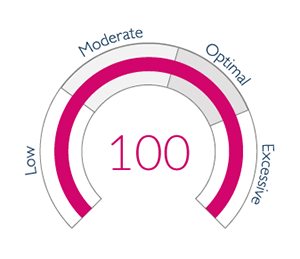
Conscientiousness score: 100 - Excessive
Lloyd has the highest possible conscientiousness score, falling at the top end of excessive. He’s a perfectionist and is extraordinarily self-motivated. This is a good example of how excessiveness can potentially be a warning sign, but isn’t inherently wrong. Lloyd can manage potential obsessive tendencies by being self-aware and channel his naturally excessive conscientiousness into productive endeavours. It’s important for every leader to be aware of any potential issues their HPTI highlights, and equally vital to implement measures to mitigate more extreme tendencies.
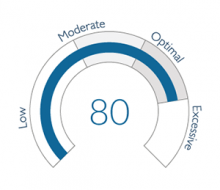
Adjustment score: 80 - Optimal
The ability to adjust is an important leadership quality. Lloyd’s score is well above average and within the optimal range. He’s good under pressure, isn’t negatively affected by stress, and can handle significant workplace demand.
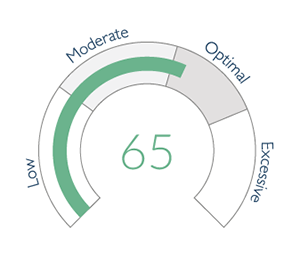
Curiosity score: 65 - Optimal
Lloyd's curiosity is within the optimal range. He’s open to new approaches and is always looking for ways to improve the company, so much so that he introduced a suggestions scheme where every implemented idea was met with reward
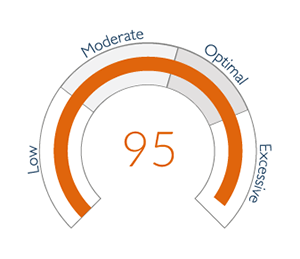
Risk approach score: 95 - Excessive
While he has a constructive approach to solving problems or conflicts as soon as they arise, Lloyd's risk approach score is high. It’s not necessarily a bad attribute to have, but others may find it intimidating or confrontational. By combining this with his interpersonal skills and emotional intelligence, Lloyd can mitigate any negative effects posed by his approach to risk.
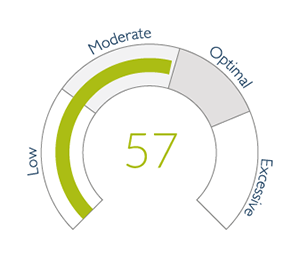
Ambiguity approach: 57 - Higher Moderate
While above average, Lloyd’s ambiguity approach is still moderate. He’s good at using opinions and calling in experts to help him navigate a complex environment and role. His score isn’t a problem in the grand scheme of things, but combined with his approach to risk, it may indicate a tendency to make quick decisions with little reflection.
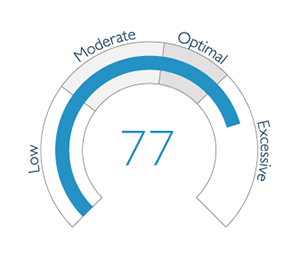
Competitiveness score: 77 - Excessive
Lloyd demonstrates excessive competitiveness. He wants to win, and he wants his company and team to be successful. But this shouldn’t signal aggressive, overly competitive behaviours. Rather, in an industry that thrives of competition, this competitiveness was channelled into making his team and firm a success.
Overall, Lloyd's results highlight how optimal zones should be used as a guideline, not arbitrary rules. And even though all six traits don’t have optimal scores, it’s still a significant result to achieve. His score helps to provide important recommendations for leadership. To be a truly effective leader, you must:
- Develop talent based on core potential – those with leadership potential need the opportunity to experience being ultimately accountable.
- Drive culture and values from the top – leaders must embody the company’s vision and demonstrate the right behaviours.
- Focus on shared vision and values – and use diverse skills, traits, and attributes to your advantage.
- Be involved at every level of the company – and gain valuable insight by making time to talk with all your employees.
- Take ultimate responsibility – a leader needs to be accountable and aware; pressing people for additional information if needed.
Leadership is about culture – not just the bottom line
The HPTI is designed to take a constructive approach to leadership. It helps to highlight how leadership is done – not just bottom-line performance.
It’s not a cut-throat, manipulative, Machiavellian approach to leadership. Nor is it an approach that considers personal career gain more than company success.
Simply, it’s a scientific programme that highlights high-potential individuals, and helps you to develop and retain leaders that can lead to tangible results.
Establishing leadership potential using High Potential Trait Indicator
One of the other defining features of the HPTI is its ability to identify optimal leadership traits. It goes beyond simply identifying personality traits and provides clear guidelines for identifying high potential leaders based on their personality traits. [
The HPTI Process
Good scientific research involves thorough testing to build on theories by collecting large amounts of data. It can help to confirm findings and improve an understanding of a particular topic.
Thomas International has tested and validated the HPTI with workers around the world to ensure its results and reports are valid, reliable, and useful in workplaces around the world.
The HPTI is a scientifically validated tool, and a culture of continuous development helps it maintain relevance in a constantly changing business environment.
Implications for business
HPTI personality traits are incredibly useful in assessing high potential at work for three key reasons:
1. Personality is a stable and constant indicator
As a consistent pattern of thinking, feeling, and behaving, personality traits are relatively stable from early adulthood into later life. It means that personality is a very useful early indicator of potential at work.
2. Personality is rooted in our brains and overall biology
Personality comes from neurological processes and structures – meaning it’s hardwired in the brain and very difficult to change. Unlike factors such as motivation – which can often change – personality is a useful predictor of long-term performance and potential.
3. Personality traits interact and complement each other
Personality traits don’t exist in isolation. Each one interacts to form an overall personality structure. Having high or low levels of one particular trait will influence how all other traits are experienced and expressed. It means that getting a complete picture of an individual’s traits working together is key to understanding overall leadership potential and decision making.
Today’s graduates, tomorrow’s leaders

With more graduates than ever achieving upper-second or first-class degrees, businesses can no longer rely on a candidate’s academic achievements as a sufficient differentiator.
But how else can you ensure that you’re hiring millenial talent with the potential to succeed in your organisation, and how can you develop them into the leaders of tomorrow?
The answer is a graduate scheme – backed by a rigorous, structured development programme.
Graduate schemes come in all shapes and sizes, and span every major industry. They’re a way for large organisations to bridge the gap between education and the world of work. They’ve also been proven to deliver long-term business benefits and have the potential to produce future leaders. So when nearly a quarter of the country’s leading employers are increasing their graduate recruitment budgets, there has never been a better opportunity to gain a competitive advantage. Here’s how to make it happen.
Recruit potential, not the finished product
Although academic qualifications and CVs can give some idea about a candidate’s ability to fit into an organisation, they can’t provide a reliable measure of workplace behaviour, cognitive ability, personality, future potential, or cultural fit. It’s why more than three-quarters of HR professionals now agree that psychometrics is a powerful hiring tool.
By understanding a candidate’s cognitive potential – the speed at which they learn new information – you can immediately compare different candidates and identify those more likely to hit the ground running and make an immediate impact on your organisation.
When combined with a measure of behavioural, emotional, and personality traits, you create a powerful selection process that enables you to easily identify how well-matched a candidate is to a particular job role, graduate fast-track graduate programme, or leadership.
Develop your new recruits

Having the right development programme in place for high-potential graduates is as important as hiring the right people in the first place. And while you’ll have high expectations for your graduates, your graduates will have similarly high expectations of you as an employer.
It’s therefore critical to implement timely and comprehensive development to not only keep your employees engaged, but also foster their personal development.
This can be done in several ways, including:
- Developing the key business skills required to succeed in your organisation – and exposing them to different areas of your business.
- Conducting team behavioural profiling – to gain a deeper understanding of their preferred ways of working and learning environments, and to encourage team working and improve communication.
- Holding regular soft-skills training courses – that help build and develop certain personality traits and behaviours.
- Delivering regular constructive feedback – based on their performance across your entire organisation.
By producing a structured development programme, you can ensure that everyone has access to the same knowledge and opportunities that support progression and enhance performance.
Identify your future leaders
You’ve hired high-potential graduates and spent a year developing their hard skills, behaviours, and business acumen – so what’s next?
Benchmarking enables you to audit your potential leaders and helps you to identify commonalities between high-potential traits and performance across your entire organisation.
This, combined with appraisal grading and nine-box grid evaluations, will help you to pick out those most likely to succeed as future leaders, and signal next best steps.
You may then want to offer leadership skills and communication training, focused on developing their ability to perform as a leader. As with all graduates, development should be continuous and tailored to the individual – ensuring you provide each employee with the best opportunity to perform.
Self-development and the steps towards stronger leadership
Successful leaders know there’s always room for improvement and make time for self-development – no matter how senior they are.
To help maintain progression and direction, we’ve identified four key steps to follow that can help support continuous growth as part of the self-improvement process.
1. Decide on your objectives
Without understanding where and who you want to be, you’ll struggle to focus your development.
That’s why it’s a good idea to write down all your goals and aspirations – no matter how outlandish they may seem – to help develop a complete picture of your objectives, regardless of whether they’re achievable in the short term.
Also think about who you want to be in an ideal world. Ask yourself two questions:
- Are there certain behaviours you feel you need to work on to become a better leader?
- Do you want to develop elements of your emotional intelligence, for example to become more optimistic, or to have more control over your impulses?
2. Gain a clear picture of your current situation
The next step is to create a clear picture of who and where you are now – including your strengths and weaknesses. It’s important to consider both your behaviours and personality traits, as well as your hard skills.
Like we highlighted in the previous section, psychometric assessments can help you understand your personality, behaviour, and emotional intelligence to help identify where your strengths lie, and what skills and attributes you may need to develop.
What’s more, constructive feedback from your colleagues and customers about your strengths and weaknesses will help add objectivity.
Once you’ve identified your strengths and weaknesses, it’s important to bring it all together. A SWOT matrix can be useful to display your strengths and weaknesses alongside any opportunities and threats, and will make it easier to identify self-development actions you need to take.
3. Plan your strategy
Once you’ve identified where you are now and where you want to be, you need to bridge that gap to make your leadership vision a reality.
The first step is setting objectives. We recommend following the SMART framework:
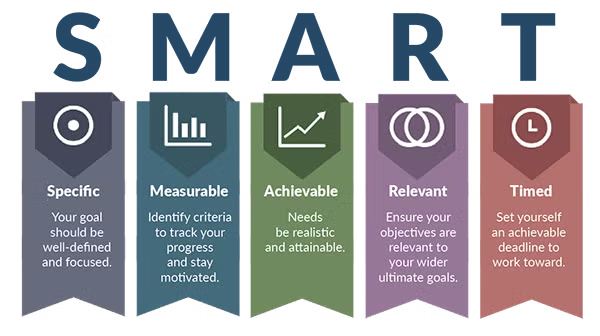
Once you know exactly what you want to achieve, you now need to put your plan into action. Ask yourself what training you may require and what support you need. Would you benefit from coaching, or the wisdom of an experienced mentor?
If you act early on and keep the momentum going long-term, you’re more likely to develop as a leader.
4. Reflect and review
The environment around you is constantly changing, so taking an approach of continuous evaluation is key to ensure your plan doesn’t drift.
Review your progress against your objectives monthly and be prepared to amend your goals and action plan along the way.
It’s also important to collect feedback at least once a year to objectively assess your strengths and weaknesses, and understand if these change over time.
Your leadership questions answered
At Thomas International, we help organisations like yours find the best leaders today, and develop them for your challenges tomorrow. We’ve based this section on questions you may be asking right now, and we’ve provided some guidance below.
1. What are the four types of leadership?
- Autocratic – centralises power and decision making, gives orders, assigns task and duties without consulting employees and takes/assumes full authority
- Democratic/participative – decentralise authority. Characterised by consultation and participation in the formulation of plans. Encourages participation in decision making.
- Laissez-faire – Also known as free-rein leadership. These leaders avoid power and responsibility, gives no direction and allows the group to establish their own goals and work out their own problems.
- Paternalistic – relationship between the leader and the group is the same as the relationship between the head of the family and members of the family. The leader guides and protects his subordinates as members of his family.
2. What are the seven functions of leadership?
The seven functions of leadership are the seven main managerial functions that a leader needs to do. These are:
- Planning
- Organising
- Leading
- Controlling
- Staffing
- Motivating
- Directing
3. What are the most important skills a leader should have?
According to Professor Adrian Furnham, who co-developed the HPTI assessment, the top three most important skills a leader should have are:
- The ability to form and maintain healthy relationships
- Self-awareness – aware of their own strengths and limitations
- The ability to embrace change
Dave Woodward, former CEO for H.J. Heinz Company, believes that overall intelligence is one of the key skills a leader should have. By overall intelligence, this includes emotional intelligence, spiritual intelligence and a healthy IQ.
Conclusion: Harvest and develop today’s leaders for a brighter tomorrow
Whether leadership is something people are born with or a learnt skill, being able to identify leaders using a scientific approach – and supporting their continuous development – is vitally important for any successful and competitive organisation.
At Thomas International, we use scientifically proven processes – such as HPTI – to help organisations like yours tackle the challenges of identifying, recruiting, and retaining leaders – both today and tomorrow.
To see how we can help you harvest and develop the best leaders your industry has to offer and if you have any questions that aren’t covered here, get in touch with one of our experts.




